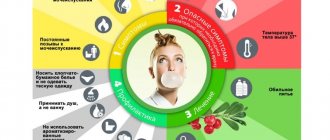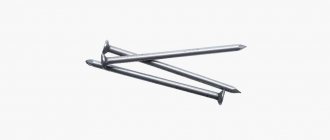A bladder disease characterized by inflammation of the walls is called cystitis. In most cases, it affects women, the reason is the anatomical features of the structure of the urinary system. Almost every girl has encountered it at least once in her life, but some have to treat cystitis almost every month. What to do, and what could be the reasons for this manifestation of the disease?
In most cases, cystitis affects women, the reason is the anatomical features of the structure of the urinary system.
Nature of cystitis
Most people believe that cystitis is an infectious disease and that the pathological process is based on infection by microorganisms. How does this happen? It is very easy for bacteria to get into the bladder from a woman’s external genitourinary organs, since their urethra is wide and short. Having climbed along it, the microorganism enters the mucous membrane of the walls, which causes the onset of the inflammatory process.
The causative agents may not necessarily be harmful bacteria. In other environments, such as the intestines, they may even be beneficial and participate in the digestive process. These can be various microbes such as streptococci, staphylococci, enterococci, salmonella and protea. Vaginal bacteria such as Candida can also be the causative agent.
Cystitis can be infectious or non-infectious; they differ in the way microorganisms and viruses enter the bladder or are caused by other factors.
This is an ascending route of infection, but infections can enter the body in other ways. The second most common method is descending, that is, from the upper organs to the lower ones. This means that microorganisms or viruses entered the bladder from the kidneys and ureters located above.
The infection can also come through the blood. Sometimes a simple sore throat is enough for cystitis to begin. In most cases, rarely will anyone associate ordinary tonsillitis or dysbiosis with inflammation of the bladder, but sometimes they are the cause. There is another way for infectious agents to enter the organ - through the walls of the bladder from nearby foci of inflammation, that is, from the pelvic organs. This happens especially often in men, but women are no exception.
The ways in which microorganisms and viruses enter the bladder were listed above, i.e. the infectious nature of the inflammation was considered, but there are also non-infectious cystitis. And the reasons for their occurrence may be different.
- Medicinal cystitis, or chemical. It is caused by medications taken (chemotherapy, analgesics, antibiotics) and agents that create an unfavorable environment in the bladder, irritating the walls of the organ and causing an inflammatory process. To treat it, it will be necessary to discontinue a certain drug and replace it with an analogue that will not harm.
- Allergic cystitis. With this form of the disease, symptoms may appear only after using certain hygiene items (bath bubbles, intimate gels, spermicidal ointments) or eating certain foods.
- Thermal cystitis. It occurs when, during the procedure of flushing the bladder or other manipulations involving the introduction of solutions into the organ, too hot a liquid is poured.
- Interstitial cystitis. The nature of its appearance is not yet fully understood, but the disease develops very slowly and severely deforms the walls of the bladder.
- Cystitis due to mechanical damage to the walls of the organ. The cause is urolithiasis.
As it becomes clear from what is written above, a correctly diagnosed cause of the disease is 50% of success in treatment. So it would be useful to familiarize yourself with the secondary factors that can provoke this disease, especially its chronic forms.
Treatment of cystitis with folk remedies
Read also Pneumonia - causes, symptoms and treatment of pneumonia
Many, many people have been helped by folk remedies in the treatment of cystitis. Let's look at some of them.
Warming up
Before warming up, it will be good if you steam your legs, and then, after wrapping yourself up, apply a heating pad to the bladder area.
Salt. Heat table salt in a frying pan and pour into a sock. Apply it like a heating pad to your lower abdomen and crawl under the blanket.
Buckwheat, millet, rice. Do the same as with salt.
Water bottle. Fill a plastic bottle with hot water, apply it to your lower abdomen and wrap yourself up.
The warming process should be pleasant, so if the heating pad is very hot, place a cloth under it.
Baths
With sea salt. Fill the bath with water and add sea salt.
With essential oils. Add 2 drops each of eucalyptus, sandalwood and juniper oils to the bath water and sit for 10 minutes.
Juniper essential oil is contraindicated during pregnancy.
With chamomile. Brew 3-4 tbsp in boiling water. spoons of chamomile and pour into a bowl, stirring with warm water. Sit in this bath until it cools down, but remember that the water should not be too hot. You can make the same bath with calendula or add calendula to chamomile.
With iodine. Fill a bowl of hot water and pour in some iodine. Sit over the bath for 10-15 minutes.
With milk. Heat the milk to such a state that you can sit in it, take it until it cools down.
Decoctions
Chamomile. Pour 1 tbsp. spoon of chamomile 1 glass of boiling water. Take 20 ml 3 times a day.
Read also Coronary heart disease (CHD) - symptoms, causes, types and treatment of CHD
St. John's wort. 1 tbsp. Pour 1 cup of boiling water over a spoonful of St. John's wort. Boil for 10-15 minutes and strain. Take 50 ml 3 times a day.
Sage. 1 tbsp. Pour a spoonful of medicinal sage into 1 cup of boiling water and boil for 30 minutes in a water bath. Cool and add hot water if necessary until you get 1 cup of liquid. Take 50 ml 3 times a day 30 minutes before meals.
Lingonberry leaves. Pour 1 cup of boiling water over 2 teaspoons of lingonberry leaves and boil for 10-15 minutes. Let the broth steep for at least 2 hours. Strain and take 100 ml 4 times a day before meals.
Yarrow. Brew 2 teaspoons of yarrow with 1 cup of boiling water. Let stand for 1 hour and strain. Take a quarter glass 4 times a day.
Ways to combat the disease
To combat the cause of the disease, antibiotics or sulfonamides are usually prescribed. In some cases, medications for cystitis may be prescribed to women immediately, before testing. In this case, doctors prescribe broad-spectrum antibiotics that destroy several types of bacteria at once. After diagnosis, the drug can be chosen more precisely, taking into account the specific microorganism that triggered the onset of the disease.
Some women are prescribed antibiotics for cystitis immediately, while others are prescribed only after the test is completed. Why is this happening? Please note that when prescribing treatment, the doctor first takes into account the severity of the disease. Severe pain, for example, may be a sign of incipient kidney inflammation, in which case immediate use of antibiotics is indicated. With a mild course of the disease, on the contrary, it is better to wait for test results.
If cystitis is accompanied by severe pain , then treatment includes taking Monural or Sedural (these painkillers are used exclusively for infections of the genitourinary system) to reduce pain. However, if you don't have a quick trip to the pharmacy, you can take your regular painkiller in combination with a paracetamol tablet.
However, remember, these drugs will not cure cystitis, they will only relieve you of the symptoms of the disease. Also, do not be alarmed that your urine will turn bright orange while taking Sedural. Taking these pills for cystitis can result in the only trouble for women - the formation of stains on their underwear.
How to relieve acute pain at home
To do this, you need to take a glass bottle (0.5 l) or a heating pad, fill it with hot water (approximate temperature - 45-50 degrees), close it tightly with a stopper and apply it to the lower abdomen.
It will be even more effective if you squeeze it between your legs. A bottle that is too hot should be wrapped in a cloth or towel. And before applying, check that you have closed the lid tightly. When the water begins to cool, repeat the procedure by refilling the bottle with hot water.
The pain will begin to gradually decrease approximately an hour after the procedure begins. However, warming up will also not cure you of the disease, so going to the doctor should not be neglected.
A long course of the disease, the appearance of an increasingly frequent urge to urinate, and the addition of chills, high fever, vomiting or lower back pain to these symptoms indicate the occurrence of some complication or the transition of this disease to another, more dangerous one. The consequence of untreated cystitis in women is pyelonephritis. Inflammation of the kidneys can lead to serious complications, so if such symptoms occur, you should consult a doctor as soon as possible. Read more about traditional and folk treatment of cystitis →
Exacerbation of cystitis and methods of prevention
Unfortunately, cystitis is one of the diseases that easily become chronic. To reduce the likelihood of this and avoid exacerbation of the disease, you need to:
- At the height of the illness, drink more fluid - a glass every 3 hours.
- Every time you go to the restroom, try to completely empty your bladder.
- To prevent E. coli from entering the urinary tract, wash the genitals from front to back. The same movement must be repeated when using toilet paper.
- Spend more time on personal hygiene. It is recommended to shower at least once during illness. During menstruation, it is better to increase this amount to 2-3. Before sexual intercourse, you should also wash your genitals well. To avoid infection, a woman should touch her own genitals only after thoroughly washing her hands.
- During your period, change your pads more often, no matter how well they absorb blood. The secretions on such personal hygiene products are an excellent breeding ground for bacteria. In addition, the pad itself is a “bridge” between the anus and the urinary tract, along which microorganisms easily move.
If you suffer from frequent exacerbations of cystitis, and you are sure that sex is to blame, then it is better to discuss preventive measures with your doctor. Today, experts often recommend that their patients take a Sulfanilamide or antibiotic tablet after sexual intercourse. This will prevent infection without any of the side effects that may occur with long-term use of these medications.
With regular inflammatory processes in the urinary tract, it is recommended to think about changing the method of contraception. Birth control pills, for example, very often cause the development of cystitis. A similar problem is also observed in those who use suppositories, vaginal diaphragms or colored condoms.
It is strictly prohibited to engage in sports exercises during an exacerbation period. In addition, you should try to wear looser clothes, since wearing tight trousers can cause an exacerbation of the disease.
What should be the diet for cystitis?
With cystitis, women need to adhere to a certain diet. Drinking caffeine-containing drinks or alcohol is unacceptable, as they can dramatically worsen the course of the disease. But if drinking coffee in the morning or during the day is not just a whim, but a habit, then it is advisable to drink at least a glass of water after that.
To prevent the disease, it is recommended to drink cranberry juice. It contains hippuric acid, which prevents bacteria from attaching to the bladder mucosa. You should drink up to 4 glasses of this drink per day. Adding cranberries to yogurt is also very beneficial. But it is better for women to exclude hot peppers and other seasonings from the diet if they have cystitis. It is also better to eat less white bread, rice, pasta and sugar.
If you follow all these simple recommendations, then you will not have to rack your brains over how to cure cystitis, visit women’s examination rooms in clinics, or stand in lines at pharmacies. Be healthy!
We recommend viewing: All about cystitis in women
We recommend reading: Endometriosis of the cervix: how to identify and cure an insidious disease
Author
Mama66.ru
Editorial staff of the portal Mama66.ru
All articles by the author
I like!








